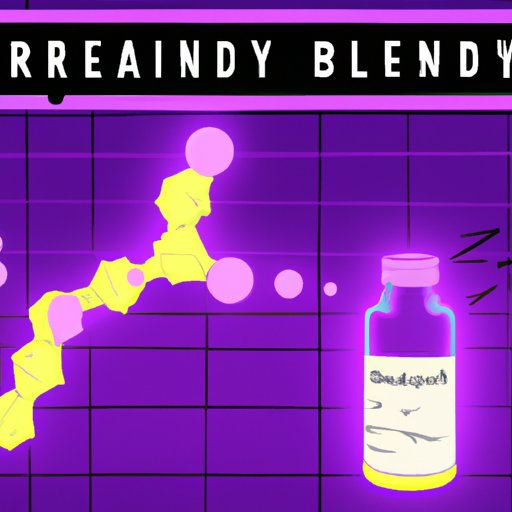Introduction
Allergies are a common problem, affecting millions of people around the world. Benadryl is one of the most popular over-the-counter medications used to treat allergy symptoms. But how quickly does Benadryl work? In this article, we will explore the science behind Benadryl and how fast it can provide relief from allergies.

Exploring the Science Behind How Quickly Benadryl Works
Benadryl is an antihistamine, meaning it blocks the effects of histamine, which is produced by the body when it detects an allergen. Histamine causes inflammation, sneezing, itching, and other allergic reactions. By blocking the effects of histamine, Benadryl can help reduce these symptoms.
Benadryl comes in several different forms, including tablets, capsules, liquid gels, and syrups. The type of Benadryl you choose will depend on your preference and the severity of your allergy symptoms. Different types of Benadryl have varying levels of effectiveness and may take different amounts of time to start working.
Investigating the Effects of Benadryl on Allergies
Benadryl is commonly used to treat a variety of allergy symptoms, including nasal congestion, watery eyes, sneezing, itching, and hives. It can also be used to treat insect bites and stings. Depending on the severity of the allergy symptoms, Benadryl may start to take effect within 15 minutes or up to an hour after taking it.
It is important to note that Benadryl should not be taken more than the recommended dosage. Taking too much can lead to serious side effects, including dizziness, confusion, drowsiness, and difficulty breathing. If you think you have taken too much Benadryl, seek medical attention immediately.
Comparing Benadryl to Other Allergy Medications – What’s the Difference?
Benadryl is just one of many over-the-counter medications used to treat allergy symptoms. Other popular options include Zyrtec, Claritin, and Allegra. These medications work in similar ways to Benadryl, but they may take longer to start working or have different side effects. Some of these medications are available in prescription strength as well, which may be more effective for certain individuals.

How to Maximize the Effectiveness of Benadryl for Allergic Reactions
The timing of when you take Benadryl can make a difference in how quickly it starts to work. For best results, take Benadryl as soon as you notice the onset of allergy symptoms. This will help ensure that the medication has time to start working before the symptoms become severe. Additionally, combining Benadryl with other medications such as decongestants or anti-inflammatory drugs can help maximize its effectiveness.

Understanding the Benefits and Risks of Taking Benadryl
As with any medication, there are potential risks associated with taking Benadryl. Common side effects include drowsiness, dry mouth, nausea, headache, and dizziness. It is important to talk to your doctor if you experience any of these side effects or if you have any concerns about taking Benadryl. Additionally, Benadryl may interact with other medications, so it is important to discuss any other medications you are taking with your doctor before using Benadryl.
A Guide to Choosing the Right Dosage of Benadryl for Allergy Relief
The proper dosage of Benadryl will depend on the individual and their age and weight. Generally, the recommended dose is 25 to 50 mg every four to six hours, up to a maximum of 300 mg per day. It is important to follow the recommended dosage and not take more than the recommended amount. Additionally, Benadryl should not be taken more than three times per day unless directed by your doctor.
Conclusion
Benadryl is a popular over-the-counter medication used to treat a variety of allergy symptoms. It works by blocking the effects of histamine, which can help reduce inflammation, sneezing, itching, and other allergy symptoms. While Benadryl can start to take effect within 15 minutes, it is important to follow the recommended dosage and talk to your doctor if you have any questions or concerns.
(Note: Is this article not meeting your expectations? Do you have knowledge or insights to share? Unlock new opportunities and expand your reach by joining our authors team. Click Registration to join us and share your expertise with our readers.)
